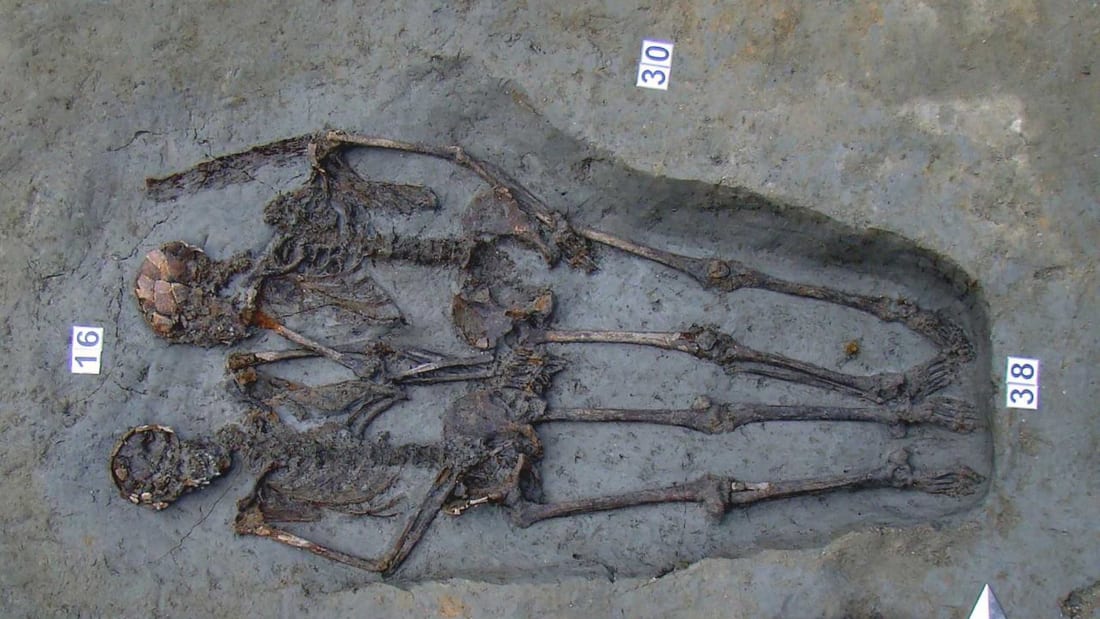
There’s a new twist in the story of the Lovers of Modena, the pair of ancient skeletons who were fossilized holding hands. It turns out, they were both male.
When archaeologists originally discovered the fossilized pair in the mud of the Italian city of Modena in 2009, they speculated that they were lovers who died in embrace, “their faces staring into each other,” Donato Labate, the director of the archaeological excavation, said at the time. “I have been involved in many digs but I’ve never felt so moved.”
But researchers at the University of Bologna and the University of Modena have since tested the peptides in the tooth enamel of the 1,500-year-old skeletons and the results, published in the journal Nature this week, suggest that the one originally identified as female—perhaps because it wore a bronze ring on one finger—carried a protein only found in men and was therefore misclassified.
“They could be brothers, cousins, friends,” Giulia Di Rocco, one of the study’s authors, told CNN. “They could even be lovers. They are all equally likely, I think.”
There have been other tombs in the area where archaeologists have discovered hand-holding skeletons, including the 6,000-year-old so-called Lovers of Valdaro, in northern Italy. But in each of those cases the skeleton pairs comprised a male and a female.
Regardless of the nature of the relationship between the two people in life, the Modena skeletons offer “a unique representation of commitment between two men during the Italian Late Antiquity,” the new paper states. Federico Lugli, one of the authors, added in an interview with the ANSA news agency: “What might have been the bond between the two individuals in the burial in Modena remains a mystery for now.”